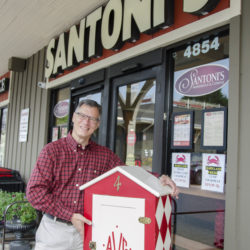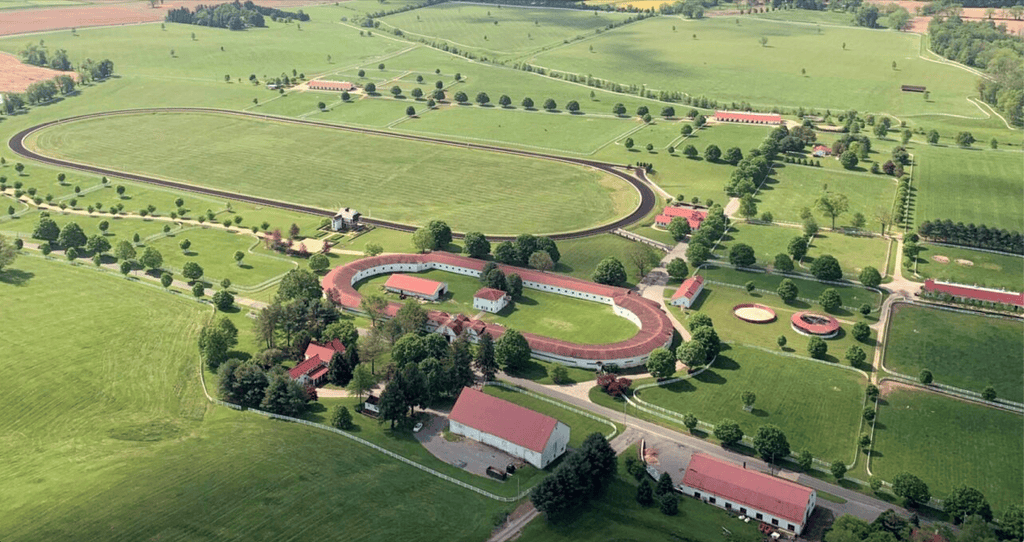
Aerial of Sagamore Farm (Sagamore website)
As Maryland horsemen await the location announcement of a proposed new training facility, Sagamore Farm could be available.
Written and compiled by Maribeth Kalinich
Updated 8/30/2024 6:40 PM ET
The Baltimore Banner ran a story on August 12th that stated Sagamore Farm is for sale. Or it was—for a day. It might have been sold in a private sale. The price mentioned in passing was $22 million.
Under the new Pimlico Plus Plan a new training facility is proposed but the final location is yet to be announced.
After reviewing – locations, the new Maryland Thoroughbred Racetrack Operating Authority (MTROA) narrowed the selections down to three:
A training facility for the thoroughbred industry to complement the Pimlico Plus model would have the capacity for a full track, barns for approximately 650 horses, dormitory housing, and would meet related horse health and safety needs.
Working with its consultant, Populous, the Authority identified eight potential locations within a 50-mile radius of Pimlico to be examined for suitability. Those are: Bowie Race Track (Bowie), Fair Hill Training Center (Elkton), Laurel Park (Laurel), Mitchell Farm (Aberdeen), U.S. Naval Academy Dairy Farm (Gambrills), Rosecroft Raceway (Fort Washington), Maryland State Fairgrounds (Timonium), and Shamrock Farm (Woodbine).
The eight sites were reviewed extensively and ranked on a scoring mechanism that evaluated nine criteria: location, natural resources (and impact on permitting/mitigation), topography, transportation and access, utility infrastructure, jurisdictional approvals, size, acquisition cost, and relative cost of development.
Based on those criteria and scoring, the three top-ranking sites are Shamrock Farm, Mitchell Farm and Bowie Race Track, and it is the recommendation and conclusion of the Authority that those three locations move to a next stage for final consideration and subsequent acquisition. The Authority, however, will continue to evaluate and consider additional suitable properties if and when they become known.
Populous evaluated training facility locations and revised the design concept for Pimlico.
Maryland has historically been a leader in equine health and safety, and the Pimlico Plus plan positions Maryland to continue in this leadership role. Under the RCDA, an Equine Health, Safety and Research Center had been studied and scoped for inclusion as part of a Laurel Park facility redevelopment. Those services, in line with what HISA has proposed – including biometric analysis, imaging and the availability of triaging veterinarian care – will be included as part of the Pimlico Plus plan and will be present at both the rebuilt Pimlico and the proposed training center discussed below.
The construction of a new equine training facility with 650 stable spaces and equine diagnostic and health components, on property in reasonable proximity to Pimlico that would also be acquired and developed under a non-private ownership structure.
Laurel Park, which currently hosts training and racing activity, was determined not to be a suitable location for the Pimlico Plus training center because of costs involved with acquisition, demolition and reconstruction as well as environmental factors. State-of-the-art equine health facilities are also contemplated as part of the training center program.
It is the recommendation of the Authority that the three top-scoring sites on that grading system – Shamrock Farm, Mitchell Farm and Bowie Race Course – move to final consideration and toward acquisition. The consultant study estimates that development costs of the top three potential sites, exclusive of site acquisition costs, will range from $113 million to $116 million, plus contingencies and soft costs.
To read the MTROA January 2024 Report to the General Assembly click here.
To read the MTROA Racing & Training Center Development Report click here.
Perhaps the MTROA should consider an additional location. Sagamore Farm.
Why Sagamore? Location, Location, Location.
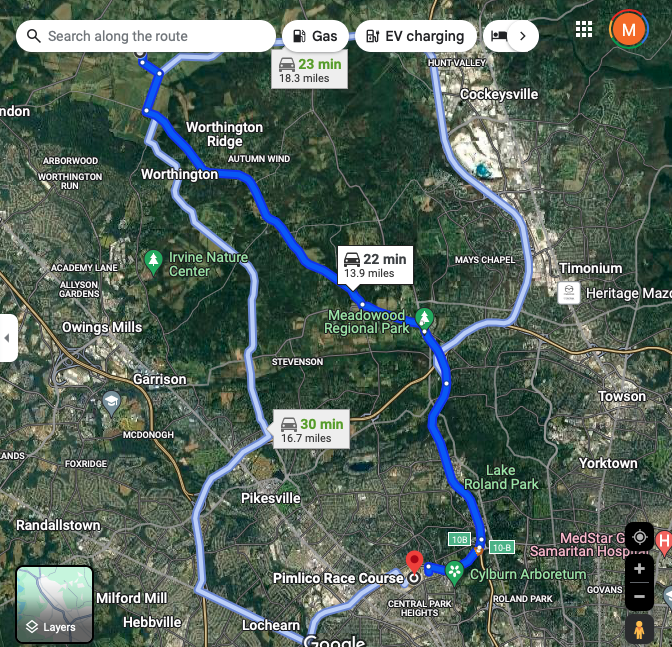
The location already has everything a training center would need and more. And it would preserve a huge part of not only Maryland but National Thoroughbred horse racing. It would also preserve a large chunk of open agricultural space.
The facility would be convenient to Pimlico and, in my opinion, would encourage more horsemen to run in Maryland. And it would be more convenient for any backstretch workers who need to relocate from Laurel Park.
It would cost a small fraction to purchase the property and add what’s needed then create a new facility from scratch.
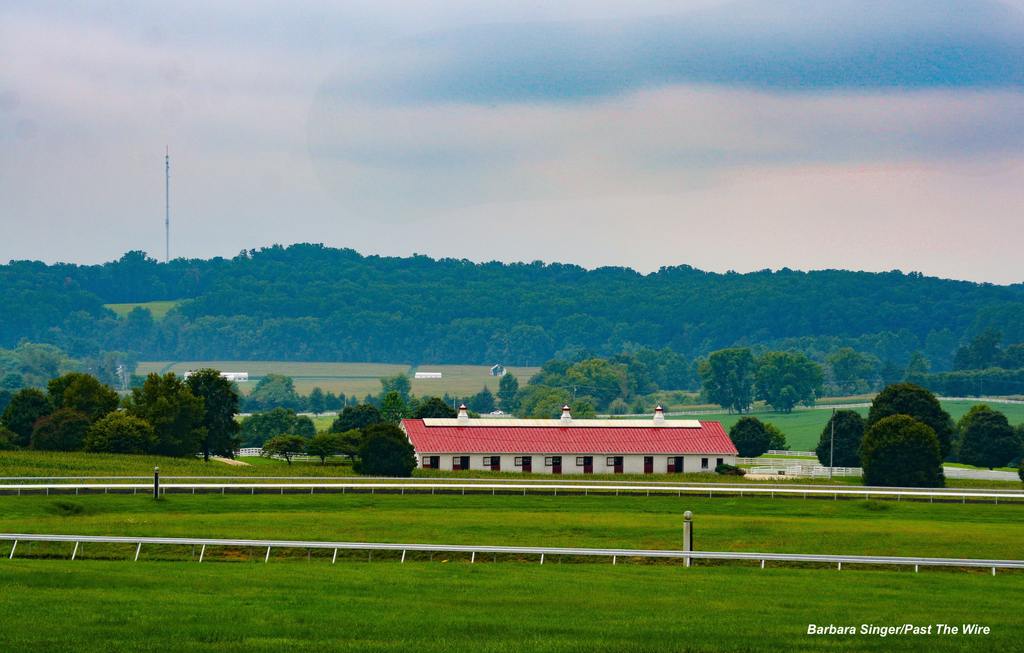
Point, Counter Point
This project might not be successful. We need to make points to counter these if the powers-that-be are going to seriously consider this option.
Barns would need to be added.
• Grooms housing needs to be built.
• Adequate parking for vans and trailers is not present.
• The training track may not be wide enough to accommodate the number of horses on the track. AND….
• The Valley Planning Council would probably never permit this to occur. The traffic on Belmont Avenue, Tufton Avenue and Greenspring Avenue would be increased and dangerous.
While it is easy to imagine Sagamore as a training track the idea of 300+ horses with grooms, trainers, vets and support care in and out of Belmont Avenue on a daily basis might not really be plausible. Also, the immediate neighbors might not be onboard this as it would add to already existing traffic on Tufton, increased noise, large delivery truck presence, lights pollution, concerns with privacy and security on neighboring farms….
My counterpoints are:
• It would preserve the green space in the county
• It would provide a lot of jobs and tax revenue in the area
• With that much acreage there should be a way to buffer some of these issues.
• The bones are there.
• There are already three other farms surrounding Sagamore.
• Location is popular by consensus.
BOTTOM LINE: It deserves to be studied and assessed as were the other eight locations
The Consensus
place doesn’t need to much work to get it back up and going.” Said Bobby Flock of Falston, Owner and CEO at Flock Thoroughbred Racing, on Facebook.
“I’ve been saying that should be a training center for years!” said Jazz Napravnik, Trainer and Coach at Jazz Napravnik Thoroughbreds and sister of champion jockey Rosie Napravnik.
“As a member of a family that has a 100+ history with Sagamore I would welcome the idea!!” said Becky Stansfield Larkins.
“Such a rich history of horse racing in our wonderful state. Maryland already boasts one of the best training centers in the country, Fair Hill (in Cecil County). Such a rich history of horse racing in our wonderful state.,” said Doris Hogarth.
“Yes, please make this happen. Stunning property in a fabulous location,” said yet another Marylander on Facebook.
Considering Sagamore for the training center really resolves a lot of issues. The Oklahoma track at Saratoga, San Luis Rey for Santa Anita, Palm Meadows for Gulfstream Park.
The horsemen in this state who have hung in there through almost 20 years of turmoil deserve it. And they seem to really like it on social media comments.
We lost Wasabi Ventures. We lost Sabrina Moore, one of the breeders of champion Knicks Go. All went to Lexington. They couldn’t achieve their next level dreams here. And that’s kinda sad.
We could just do a training center in some obscure location like Aberdeen. Or we could do something fantastic to compliment a new Pimlico. It will generate revenue for the area in taxes and patronage of local businesses and hopefully inspire new hope.
One local vendor had a really wonderful Sagamore experience. And it fills in a chapter between Vanderbilt and Plank.
Then someone said:

“Constructed on the side of a hill about 20 miles northwest of Baltimore — across a two-lane road from Sagamore — Maryland Stallion Station represents the most significant major investment in the Maryland breeding industry in nearly two decades. It consists of 100 acres, a spacious barn with 11 stalls and paddocks of nearly two acres apiece. Litz, president of the operation, said he expects more than 350 mares, about half from out of state, to be bred to the five stallions during the upcoming breeding season.” Click to read more in BloodHorse.
Sagamore Farm Past and Recent History
Alfred Vanderbilt sold the farm to James Ward in 1986. Ward wanted to develop Sagamore but due to local objections was never able to do so.
Santoni’s and the Sagamore Wall Box
By Lou Santoni
About twenty-two years ago on my birthday I was given the unique and special gift of one of the Sagamore Farms’ stall boxes, box number 4. It was given to me by a dear friend who was managing the farm for Jim Ward, shortly after he had purchased it from Alfred Vanderbilt, the long-time owner and racing legend. I remember that beautiful sunny April day like it was yesterday. At the time I was given “the box”, I didn’t know much about the deep history of Sagamore Farm, the racing legend Native Dancer, nor of Mr. Vanderbilt. What I did know, was that it was a beautiful horse farm in Worthington Valley, and that the late, lovely Jackie Gibson, who worked for Mr. Ferguson, the man who managed the farm for Alfred Vanderbilt, would stop by Santoni’s every day to pick up his copy of the Racing Form. Although I had much to learn, something inside told me that I had a special artifact that would be in my care for some time to come. Read more here.
In 2007 Maryland native Kevin Plank, CEO and founder of Under Armour, purchased the 530-acre Thoroughbred horse-racing farm in Glyndon, Maryland with a long-term plan for a major restoration.
When Plank acquired the property, it was nothing like its once glory days when Alfred Vanderbilt Jr. ran things in the 1930s.
Back then, Vanderbilt developed the farm into one of the pre-eminent horse racing farms retaining that reputation well into the 1950s.
Decades later, the farm fell into disrepair. By 1986, the farm that Vanderbilt had developed into a world-renowned racing and breeding operation was no longer operating.
There was some talk of turning the farm into a museum. Many farms in Maryland had been sold to housing developers or have been transformed into golf courses.
The Plank Era
Sagamore had been calling out to Plank for many years.
“We’d go by Sagamore (on weekend drives to the country), which was really run-down, and Kevin would say, ‘Someday I’ll own that,’” Plank’s wife Desiree Jacqueline (D.J.) told ForbesLife in a 2012 interview.
The farm had been basically abandoned and poorly attended for decades.

“Not many folks would’ve taken this on. Folks who really care about Sagamore and its history should be grateful to Kevin,” Plank’s longtime friend Tom Mullikin and farm general manager said to ESPN.
“This is a Maryland treasure, and it’s good to see a place like this brought back to life.”
Plank, a longtime fan, was dedicated to the sport. And he wanted to help revive it.
“[Horse racing] was a top-three sport in the 1950s. Why can’t we bring it back?” Plank also said.
But before Plank could think about having a winning horse there was much to be done to get the farm into operational order.
“This farm is not about nice fences and new barns. It’s about an attitude.”
Plank began by building a 9-mile fence around Sagamore Farm (it now measures 18 miles); he refurbished two barns and rebuilt the training barn.
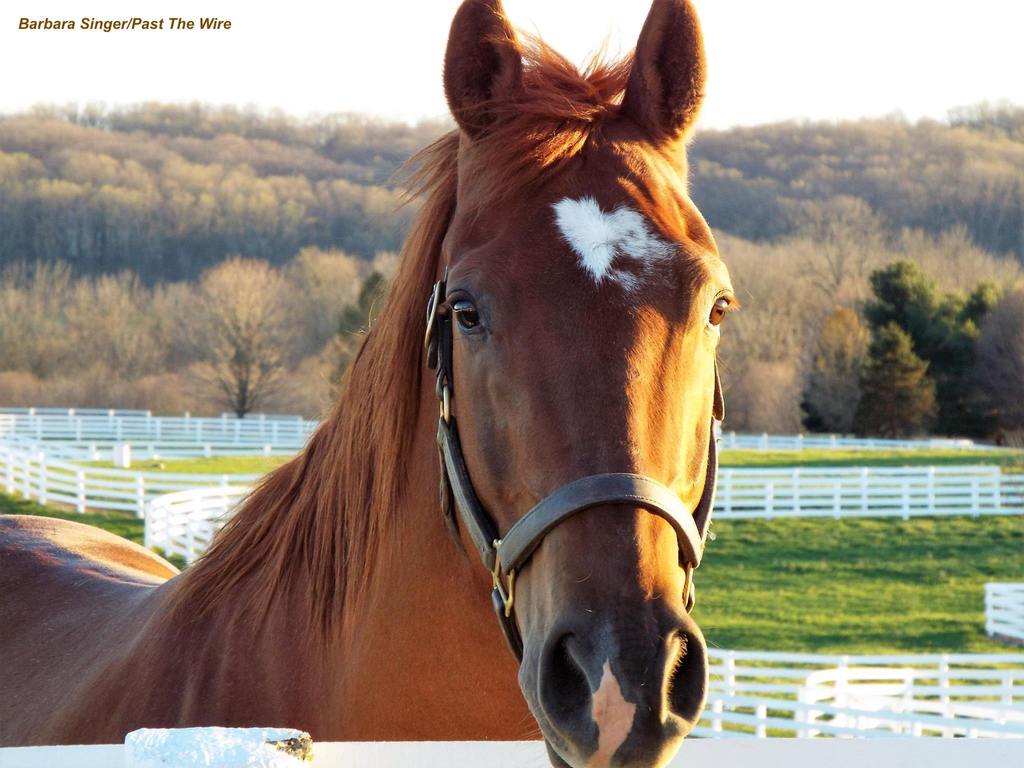
“The 17-miles of new white fence, regrown meadows, freshly painted red roofs and state of the art race track give testament to his intentions,” said Krista Smith in a Baltimore Fishbowl feature about Plank.
In 2009, Plank also rebuilt the three-quarter-mile synthetic Tapeta track training track that incorporates pieces of recycled Under Armour performance material.
As Plank carried on with the rejuvenation process his winning horse would be right around the corner.
“I think that certainly he’s taking a step in the right direction just by restoring Sagamore,” Shared Account’s trainer Graham Motion said to the New York Times.
Shared Account won the Breeders’ Cup World Championship Fillies and Mare Turf for Motion and Plank in 2010.
“There’s an extraordinary history of racing in Maryland, and it’s still very evident in the fact that racing’s so competitive, even though they’ve struggled with the purses over the last few years and as much as keeping up with everybody else.
“So certainly, if we had more Kevin Planks, it would go a long way to restoring the industry for everybody, let alone the state of Maryland,” Motion added.
Walking around the farm today, you wouldn’t know you were anywhere near an urban area. Glyndon is just 17 miles from the city’s downtown, 14 miles from Pimlico Race Course (literally a 22 minute drive straight up Greenspring Ave.)
Native Dancer, Vanderbilt’s Preakness champion on the track and the shed, is buried on the farm.
Plank held court at the Preakness every year in the Under Armor tent in the Pimlico VIP infield. But Plank said he wasn’t in this game for the Preakness parties.
The first time Plank went to Pimlico, he was a student at the University of Maryland, and he and his buddies hit the road from College Park, Md. They came with a keg and a couch in a truck.
“I never saw a horse run,” Plank said.
It would be his ambition to see his horse run in the Preakness.
The Vanderbilt Era
“Sagamore was regarded as Maryland’s finest horse farm. Incorporating twenty buildings and seventy full-time employees in three divisions—breeding operations, training operations, and maintenance—the farm had immaculate barns, fences and paddocks, an outdoor racing strip, and a quarter-mile indoor track for winter gallops: a kitchen, chef, dining room, and dormitory housing for the staff, and a large house for farm manager Ralph Kercheval and his wife.”
John Eisenberg, Native Dancer: The Grey Ghost, Hero of a Golden Age
Sagamore Farm was founded in 1925 by Issac Emerson, the inventor of Bromo-Seltzer.
Emerson’s daughter, Margaret, was the mother of Alfred G. Vanderbilt, Jr. Margaret bequeathed the farm to her son for his 21st birthday in 1933.
Vanderbilt was also a major stockholder in the Maryland Jockey Club and orchestrated the 1938 Pimlico Special Match Race as a way to boost Pimlico’s public profile as that facility, privately owned, was in disrepair and fading.
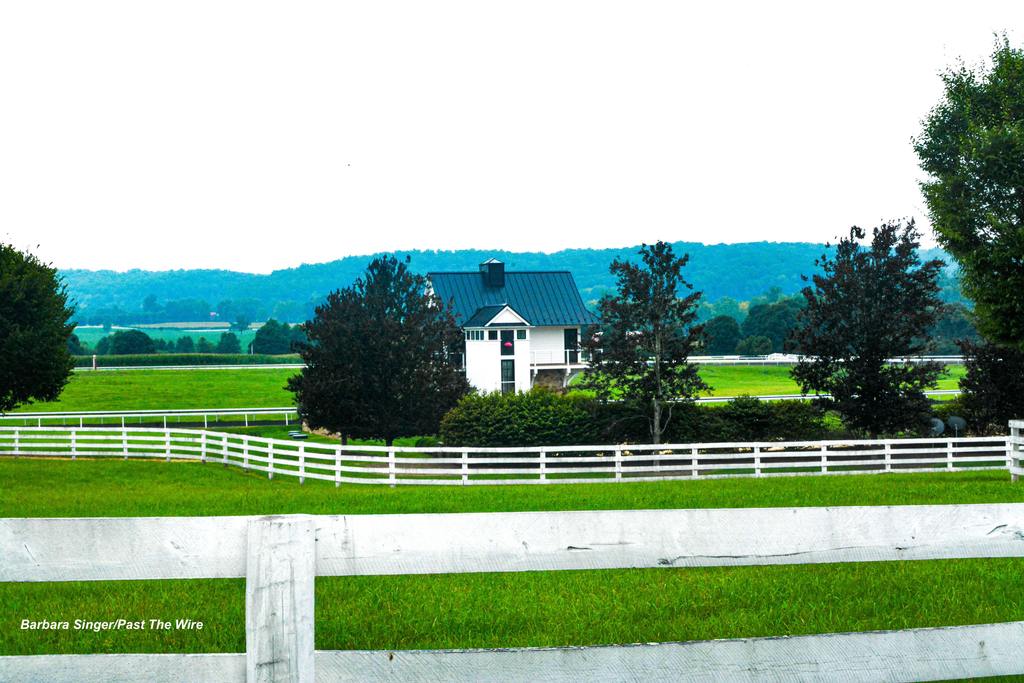
He also served at various times as head of the New York Racing Association and the United States Jockey Club.
Under Vanderbilt’s legendary guidance the farm was internationally recognized as a premier training and breeding facility for the next half century. The Queen of England herself kept a broodmare on the property during its heyday.
Sagamore Farm through the years.
In 1941, Vanderbilt teamed up with Walter P. Chrysler, Jr. and other investors to acquire for breeding services the 1935 English Triple Crown winner Bahram from the Aga Khan III. Bahram stood at stud at Sagamore Farm then was sent to Chrysler’s North Wales Stud in Warrenton, Virginia. In 1966, Vanderbilt was part of another syndicate that bought Kentucky Derby and Preakness Stakes winner Kauai King who would also stand at stud at Sagamore Farm.
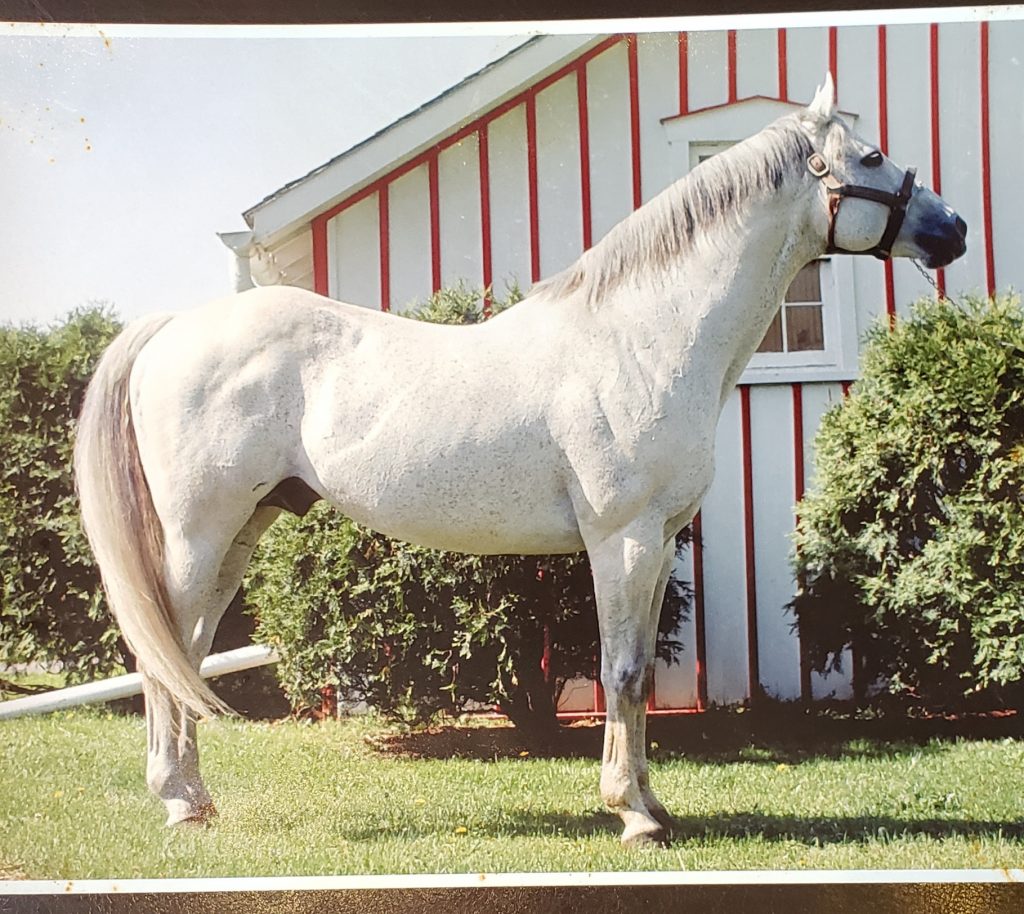
The farm’s most famous equine resident was Native Dancer. Known to the public at large as the Galloping Grey Ghost, Native Dancer went 21 for 22 during his racing career which spanned from 1952 to 1954. In 1953 Native Dancer won both the Preakness Stakes and Belmont Stakes.
Sagamore Farm’s best known racehorses were Discovery, Bed o’ Roses, and Native Dancer, all of whom were inducted into the National Museum of Racing and Hall of Fame.

Maryland Encourages Farmland Preservation
3,385 Acres of Farmland Protected Forever
In October 2022, The Maryland Board of Public Works approved 25 new Maryland Agricultural Preservation Foundation (MALPF) easements at their meeting on October 12, 2022. These easements will permanently preserve 3,385 acres of prime farmland in Baltimore, Caroline, Carroll, Dorchester, Frederick, Kent, Talbot, Washington, and Wicomico counties for an investment of more than $13.6 million.
“I am grateful for the farmers that volunteer to sell and extinguish their development rights through the MALPF program,” said Agriculture Secretary Joe Bartenfelder. “These farms will now be preserved in perpetuity, thereby supporting the environment and food security for the citizens of Maryland.”
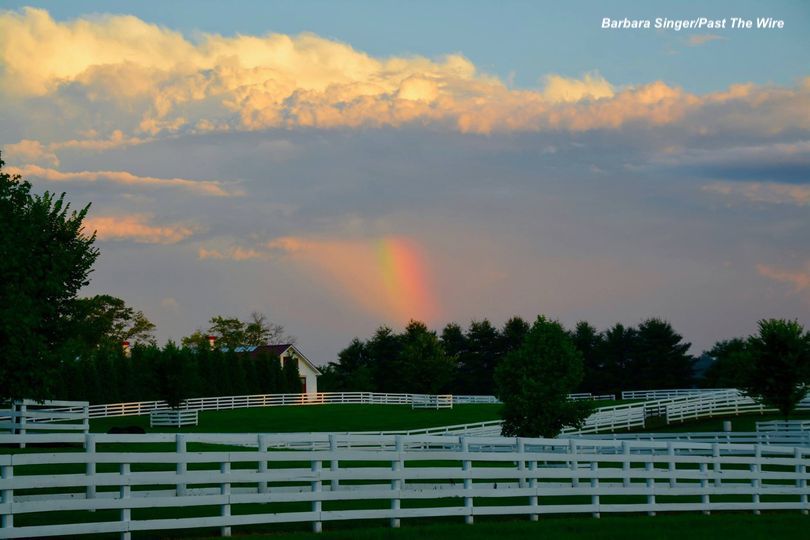
View a list of the MALPF easements broken down by county here. These newly approved easements will help the state meet its Chesapeake Bay goal of conserving and preserving over 1 million acres of productive agricultural land by 2030.
MALPF was established in 1977 as part of the Maryland Department of Agriculture. MALPF purchases agricultural preservation easements from willing farmers that forever protects prime farmland and woodland.
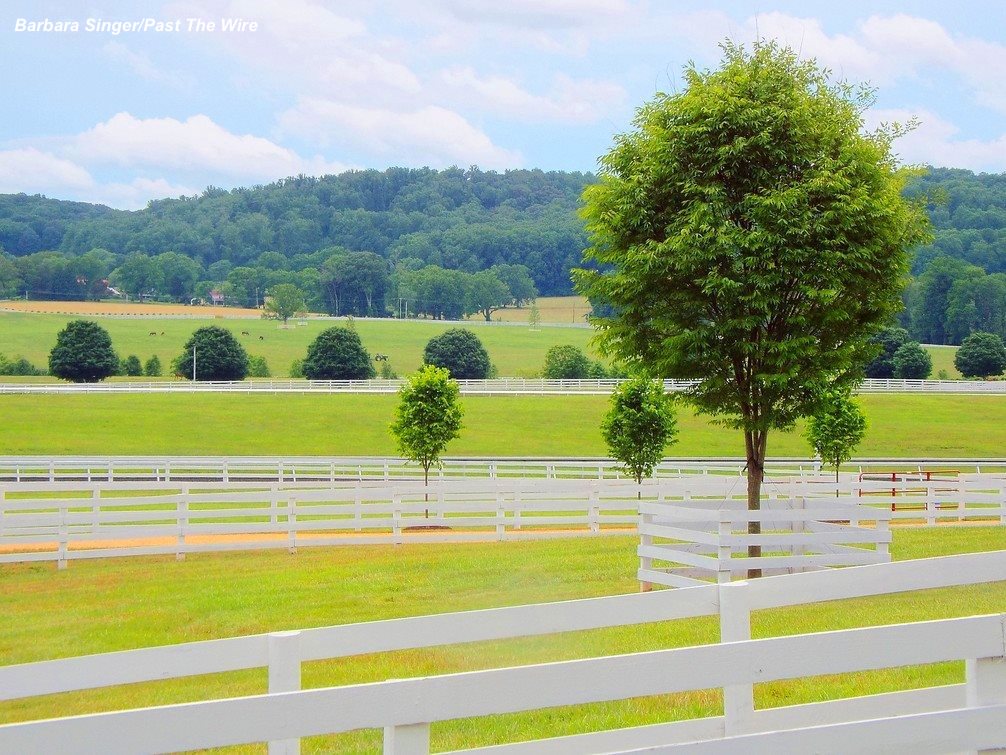
UPDATE:
From Michelle Cable, Maryland Department of Agriculture: “I would like to note that this farm is already protected under the Maryland Agricultural Land Preservation Foundation (MALPF) easement program. The MALPF easements prohibit any non-agricultural commercial and residential activity on the farm. So, your concern about the possibility of developers purchasing the farm and selling it off in pieces is moot, as the MALPF easement prevents that from occurring.
If/when this property is included as part of a possible Pimlico Plus Plan as a training center, please loop MALPF in as early as possible into the discussion, to ensure that we take the terms of easement into account into any plan for the farm.”
What do community members think?

The Valley Planning Council is very supportive of Sagamore Farm has written a petition regarding its future:
“We, the undersigned, are opposed to the use of Sagamore Farm as a catering hall or otherwise for the hosting of parties and events. We do not believe that such use is consistent with the property’s RC2 zoning, the conservation easements encumbering the land, or its location within a national register historic district. We believe that the noise, traffic, and other impacts from such use have been and continue to be substantial, particularly given the rural nature and topography of the surrounding area and the proximity of neighbors. We believe that allowing such uses in the rural areas of the County sets a terrible precedent and should not be permitted.”
VPC has concerns about activities that may be taking place at Sagamore Farm and applied for a hearing to clarify what is permitted. The virtual hearing has been scheduled for August 29 and 30, 1:30-4:30. For more information about the hearings, please click here for the August 29 hearing and click here for the August 30 hearing.
ZONING HEARINGS – 3366 & 3500 BELMONT AVENUE
Case Number: 2024-0118-SPH Location: North of southside of Belmont Ave., 1950 ft. west of Tufton Ave. 4th Election District Legal Owners: 3366 Belmont Rd. LLC, 3500 Belmont Ave., LLC
Special Hearing to determine whether the use of the subject property constitutes “spirits manufacture” under BCZR, Section 1A01.2.C.31.f. Whether temporary promotional events, including tastings and public gatherings, are a permitted use under the Special Exception for “spirits manufacture” in BCZR, Section 1A01.2.C.31.f. To determine whether the subject property has been hosting temporary promotional events, such as tastings or public gatherings, associated with spirits manufacture. To determine whether a catering hall is permitted as of right or by Special Exception in the RC 2 zone. To determine whether a property in the RC 2 zone may be rented or otherwise used for the hosting of parties or other events, whether the use of the subject property is a catering hall under the BCZR. To determine whether the use of the subject property is an “agricultural support use” under BCZR, Section 1A01.2.C.31. To determine whether the use of the subject property otherwise conforms with the BCZR; to determine such other issues as necessary and appropriate.
Join the Webex hearing online (link is external)
Join the hearing by telephone at 1-415-655-0001, Access Code: 231 781 75314
Webinar Password: 4321 (from phones and video systems)
To contribute to the Sagamore Special Project to pay for legal and expert representation. All contributions to VPC are tax-deductible to the extent allowed by law. Make checks payable to VPC, PO Box 5402, Towson MD 21285, or click the “DONATE” button below to use a credit card. Select “Sagamore, 3366 Belmont Avenue” on the drop-down menu.



